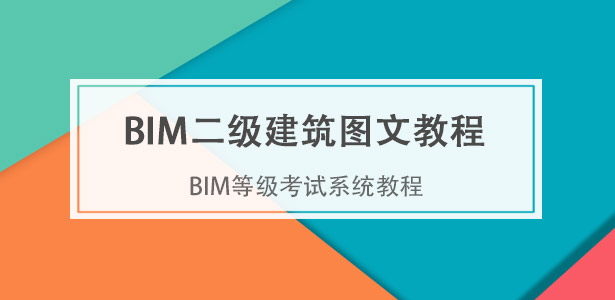
下載app免費領取會員


版權說明:本文來源BIM譯站微信公眾號,轉載已取得授權
公眾號名稱:BIM譯站
公眾號賬號:BIM2018130

譯
文
構件管理
BIM模型變得相當大且復雜。幾個GB大小的模型越來越常見。這種情況下,數據協調和管理(這在第三章中被稱為“同步”)成為了一種大量數據管理任務和難題。傳統方法使用文件更新項目版本會導致兩類問題:
1. 文件量變得巨大,必須把項目以某種方式分塊以繼續完成設計;文件很大、運行緩慢且笨重。
2. 確定文件中的變更依然是手動管理工作,把在圖紙上用紅色馬克筆寫注釋變成在3D PDF或相似文件上寫注釋。傳統上,不能在準備施工文件階段做出大的變更,因為那樣成本過高。BIM和模型管理可以剔除或大大降低這方面的問題。盡管參數化更新解決了局部變更的問題,但是不同模型之間的協調和模型中用于規劃、分析和報告的數據依然是一個重要且日益突出的問題。
長期以來一直強調但直到最近才在使用環境特別是ArchiCAD’s Delta BIM server(詳見第三章,3.5.3節)實現的功能是,僅在文件中交換新的、修改過的或者刪除的構件實例,就會剔除未修改構件中的問題。只傳遞變更的構件并將其載入(即增量更新),這會大大地降低交換文件的大小,且能立刻識別并找出變更問題。此功能需要構件級別的構件識別和版本控制,這通常由時間戳提供。隨著BIM模型文件變大,這一功能將會變得越來越重要。這一特性將在未來發布的所有系統中成為必備,用以在多個BIM應用程序之間協調。
外部參數管理
在大量創造性項目中所探討的一項功能是,基于電子表格中生成并定義的控制參數(通常是3D網格)來控制設計的參數化布局。在第五章中的建筑核心模型和第九章中的Aviva Stadium案例研究中同時列舉了使用電子表格來控制并協調幾何圖形的應用程序案例。
對某些類型的項目,從電子表格中讀寫的能力在一定層面上為不同設計工具之間提供了互操作性。假設可以用同樣的參數控制幾何圖形,在兩種不同建模環境(例如Rhino 和 Bentley)中創建等體量的參數化模型。可以在Rhino(一款對用戶友好但信息有限的設計工具)中做設計方案推敲,然后把參數更新到Bentley中,以便將變更整合到可能包含成本和能量分析功能的BIM工具中。電子表格提供了一種重量級的幾何圖形互操作性。
參數列表的外部參數電子表格的另一個用途是通過參照而不是明確地交換參數化構件。最廣為人知的例子是鋼結構。電子版的鋼材手冊帶有結構鋼的不同標準的截面輪廓,例如W18×35或L4×4。這些輪庫名稱可用于檢索鋼材手冊中的輪廓、重量以及體量屬性。類似的輪廓也可用于預制混凝土產品、配筋以及窗戶制造商的目錄。
如果發送者跟接受者都能訪問同一個目錄,然后他們可通過參照(名稱)發送并檢索相關信息,并且這種交換是通過檢索適當目錄信息并將之載入到適當的參數化模型中來實現的。這在許多生成領域中是一個很重要的功能。
鏈接到外部目錄文件
另一個重要功能是為外部文件提供鏈接。目前這種功能的主要應用于將產品鏈接到與之相關的手冊進行維護和運行,以便于后期與設施運行&維護(O&M)相關聯。有些BIM工具能實現這項功能并作為能為運維階段提供支持的工具加強其價值。
本節列舉的這些功能對于評估、選擇BIM平臺來說都很重要。稍后我們將在本章用這些功能來評估主要的BIM設計工具。
原
文
Object Management
BIM models become quite large and complex. Multigigabyte models are becoming common. In such cases data coordination and management (what is called “synchronization” in Chapter 3) becomes a large data management task and concern. The traditional approaches to updating versions of a project using files leads to two kinds of problems:
1. Files become huge and the project must be partitioned in some way to allow design to continue; the files are large, slow, and cumbersome.
2. Determining the changes within a file is still a manual management effort, replacing a red marker on drawings in drafting with notes in a 3D PDF or similar reviewing file. Traditionally, major changes at the construction document stage were not allowed because of their prohibitive cost. BIM and model management is supposed to eliminate or greatly reduce this problem. While parametric updates resolve issues of local changes, the coordination of different models and their derived data for schedules, analyses, and reports is still an important and growing issue.
The long-mentioned but only recently realized capability of only exchanging the new, modified or deleted object instances in a file, eliminating the “chaff” of the nonmodified objects has now been brought out in a production environment, notably ArchiCAD’s Delta BIM server (more fully reviewed in Chapter 3, Section 3.5.3). Transferring only the changed objects and importing them, called an incremental update, greatly reduces the size of the exchange files, and allows for immediate identification and targeting of the change issues. This capability requires object identification and version control at the object level, usually provided by a timestamp. This capability will become increasingly important as BIM models grow. It will become a “must” feature on future releases of all systems, for coordination across multiple BIM applications.
External Parameter Management
A capability explored in a number of innovative projects has been to control the geometric layout of a design based on control parameters (often a 3D grid) generated and defined in a spreadsheet. An example application of using a spreadsheet to control and coordinate geometry is presented in both the building core model in Chapter 5 and the Aviva Stadium case study project reviewed in Chapter 9, Section 9.1.
For certain types of projects, the ability to read from and write to spread- sheets provides a level of interoperability among different design tools. Suppose the equivalent parametric models can be built in two different modeling environments, say Rhino and Bentley, with the same parameters controlling the geometry. Design explorations can be made in Rhino, generally a friendly but information-limited design tool, then the parameters updated in Bentley rchitecture, allowing the changes to be integrated in a BIM tool that might have cost or energy analysis capabilities. The spreadsheet provides an important level of geometric interoperability.
Another use of external spreadsheets of parameter lists is to exchange parametric objects by reference, rather than explicitly. The best-known exam- ple is steel structures. Steel handbooks, now in digital forms, carry the differ- ent standard profiles for structural steel, such as W18×35 or L4×4. These profile names can be used to retrieve profile, weight, and mass properties from the steel handbooks. Similar profiles are available for precast concrete prod- ucts, reinforcing bars, and some window manufacturer catalogs. If the sender and the receiver each have access to the same catalog, then they may send and retrieve the relevant information by reference (name) and the exchange is made by retrieving the appropriate catalog information and loading it into the appropriate parametric model for the part. This is a significant capability in many production areas.
Links to External Catalog Files
Another important capability is to provide links to external files. The primary use of this capability today is to link products with their associated manuals for maintenance and operation, for later association with facilities operation and maintenance (O&M). Some BIM tools offer this capability and enhance their value as being a tool that can provide support during the O&M stage.
The functional capabilities outlined in this p are all important in assessing and selecting a BIM platform. They will be used later in this chapter when we assess the major BIM design tools.
本文版權歸腿腿教學網及原創作者所有,未經授權,謝絕轉載。

上一篇:Revit中日光路徑的設置
下一篇:第四十期《BIM 手冊》第二章_2.3.6節——常見問題
推薦專題























































